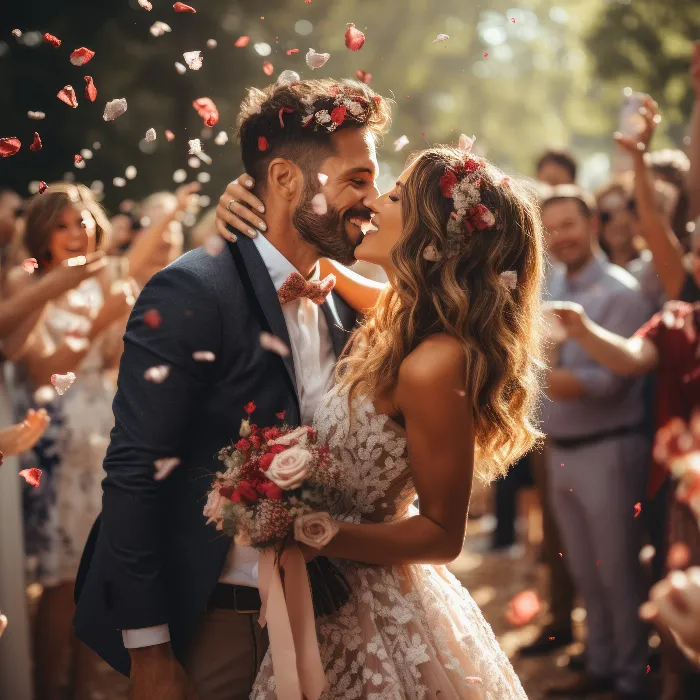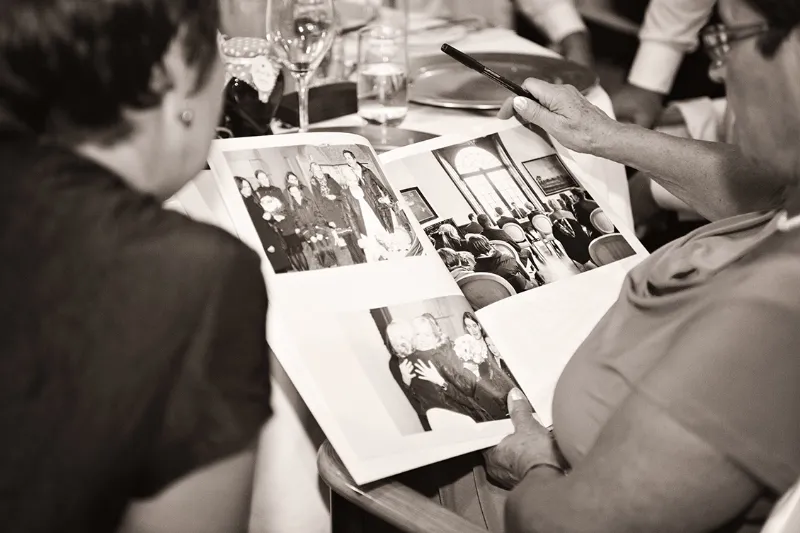
Introduction:
Now that we have completed the preparations, the wedding ceremony and also the guest photos, I don't want to miss out on listing a few aspects of the subsequent celebration. This tutorial is mainly intended as a guide. For the technical part, please read tutorial 3 of this series, and I will go into the camera settings, which should also apply to these, in tutorial 5. In order not to repeat myself unnecessarily, I will omit them here.
A small note in advance: small details are very important. For this reason, the topic of detail shots, which should of course also take into account the points listed here, will have its own tutorial and will not be listed separately here. Table decorations, bridal bouquets, rings - I am including a few pictures here to give you some ideas on the subject of detail shots at the celebrations, but have a look at Tutorial 10, which will follow soon.
The celebrations and everything that follows after the ceremony, the congratulations and the guest photos can cover many different points; here is an overview of the structure of this tutorial:
- Snapshots of the guests
- Champagne reception
- Wedding cake
- speeches
- Dinner
- Games and surprises for the bride and groom
- Bridal couple dance and party
- Bridal bouquet toss
- Miscellaneous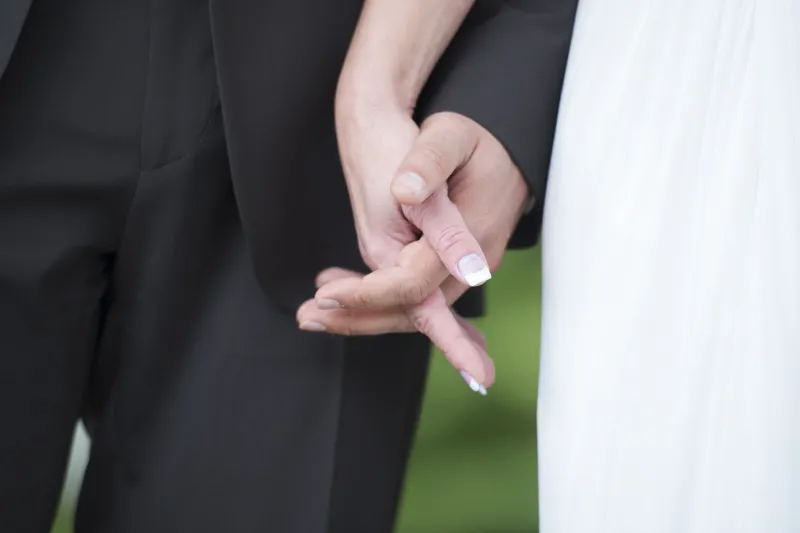
First of all, I would like to mention once again that the location naturally also belongs in this section. In other words, you should always take a long shot of the location and perhaps one or two highlights from the theme of detailed shots of the table decorations etc., because these shots are also very important to the couple. Experience has shown that these shots are also very important to the couple.
Not only does it look beautiful when the guests are already there, but also when it is untouched.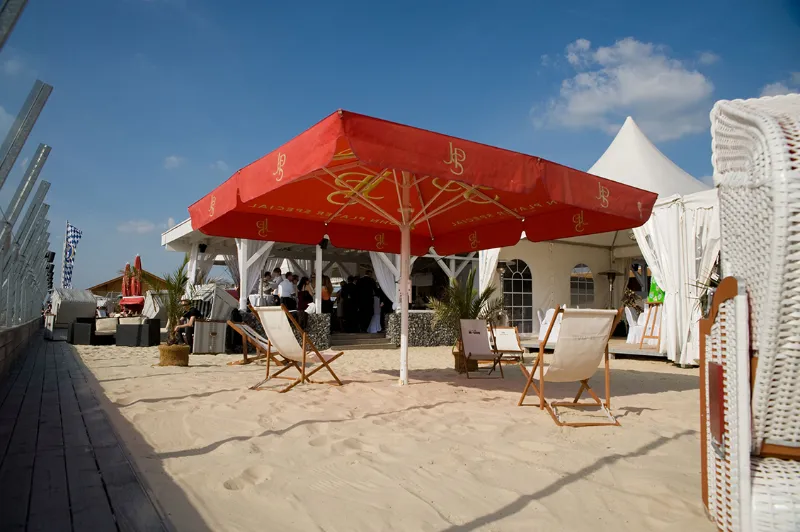
I like to use my 14-24 mm for a long shot in smaller rooms.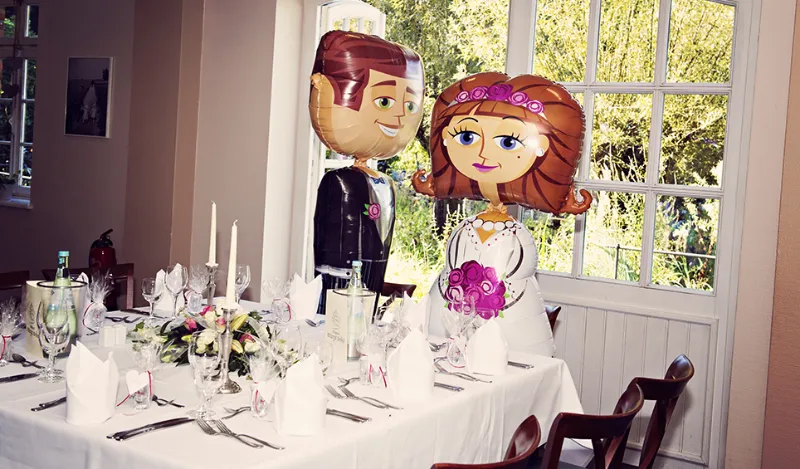
1. snapshots of the guests
In the preliminary discussion with the couple, I ask for information as to whether snapshots of all the guests are sufficient or whether they would like a separate beautiful photo of each guest couple later on. If the reportage is smaller and there is not enough time for a photo session of the guests, then there will usually only be "snapshots" that you will capture during the entire wedding reportage.
Therefore, you should always make sure that you have "everything" in view during the entire accompaniment. Greetings, champagne receptions, conversations - all of this offers the opportunity to take pictures of the wedding guests unnoticed. I usually use a lens with a longer focal length so that they don't even notice when I point my camera at them. Of course, there are also times when I specifically ask the guests to look in my direction. Sometimes it is unavoidable. If they are sitting at the table chatting and you can't keep a great distance, then this is a nice alternative to an unnoticed snapshot.
Every time I take a snapshot, I look at the camera and check whether I have captured the guests well. Maybe they are talking or turning away from the camera. Then you should try your luck again. Emotions are always a special highlight for your snapshots. Tears of joy, laughter, enthusiasm ... you should keep an eye out for these.
If you can see that a particular event is coming up, make sure you have enough space in advance - including your chosen focal length. Many guests also want a photo with the camera of the cake cutting, for example. If you don't have enough space, perhaps because of a longer focal length, then you'll have problems! I don't recommend it, but in an emergency: please move a few guests to the side in a friendly manner. Your photos have priority on the day, especially if you are paid to work for the couple.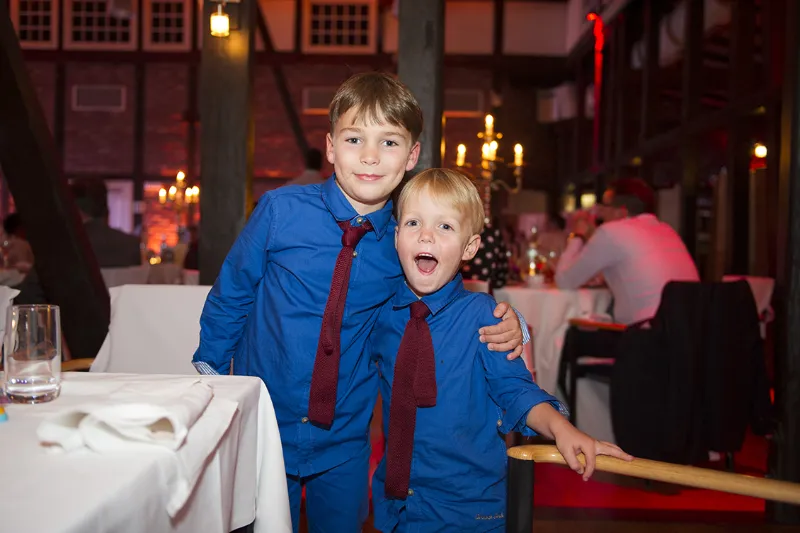
Of course, you will also have to differentiate whether you are accompanying a small or large wedding party. With smaller parties of around 20 people, it's child's play to take one "good shot" of each guest without being noticed. However, if there are 100 guests or more, you won't always manage to meet every single person, even if you are accompanying them for a longer period of time.
As I will explain later, you should avoid taking photos of the guests during the meal.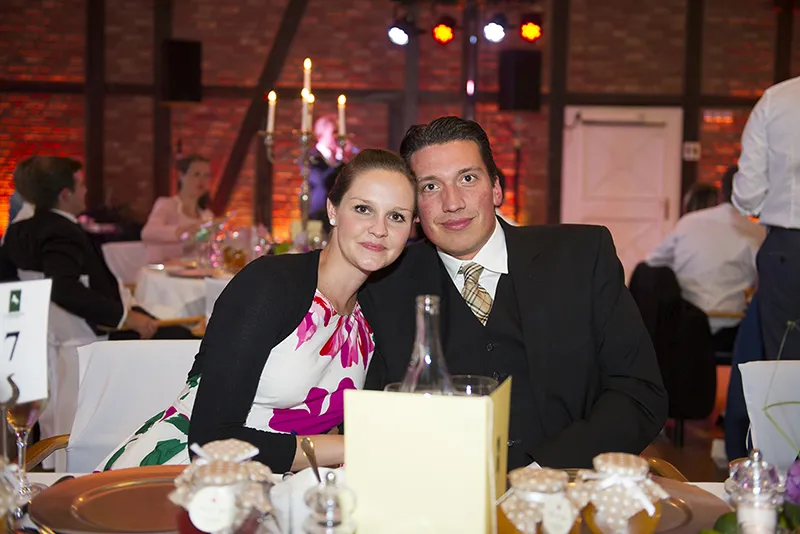
Not only is it not a nice subject when they are stuffing cake into their mouths, but they won't particularly appreciate being photographed.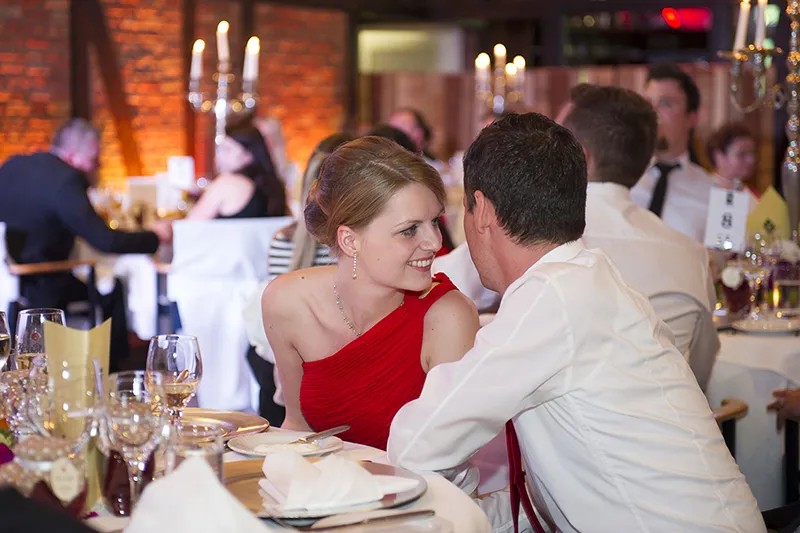
Some couples also want some funny guest pictures!
Something is happening! Treats are going around. A great motif.
2. champagne reception
The champagne reception is incorporated into the reportage in different ways, directly after the ceremony or later at the celebration location. This is a great moment to shoot your photos, especially during the toast. The bride and groom are the main focus, followed by the guests. Beware, depending on the custom, the glasses may fly afterwards! Make sure that you can capture the overall mood as well as individual guest portraits.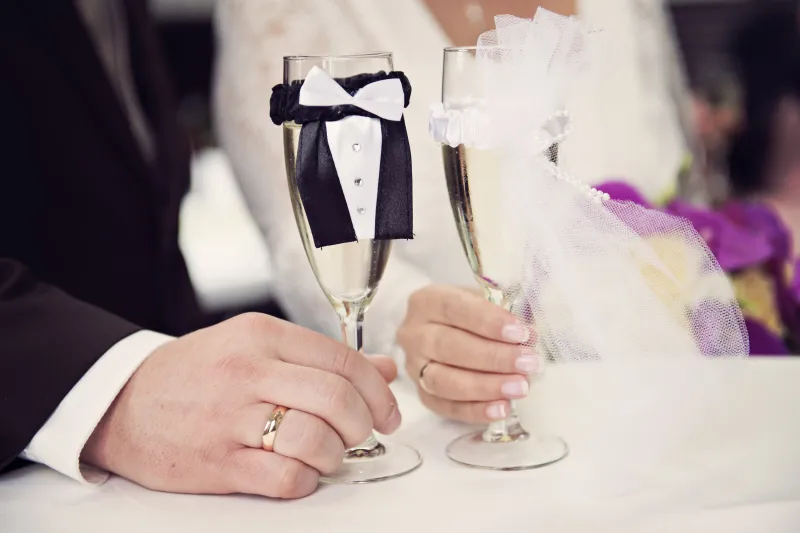
I like to vary this a lot and you usually have enough time to walk around a bit and change lenses.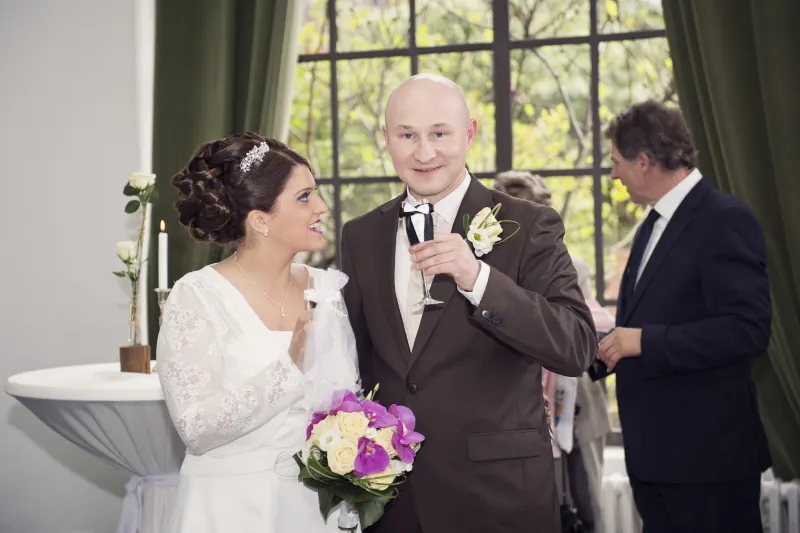
I also take nicely dressed champagne glasses with me on a walk!
3. wedding cake
For many bridal couples, the cake is an absolute highlight. Sometimes it is only cut late in the evening after the buffet, often it is also an important element at coffee time. Make sure you take a few shots of the wedding cake before you start. I also like to use a macro lens here. The cake is an important element for many couples and simply a classic. You can't have too many photos of the cake.
Of course, my favorite cake of 2013 can't be missing in this part of the tutorial series.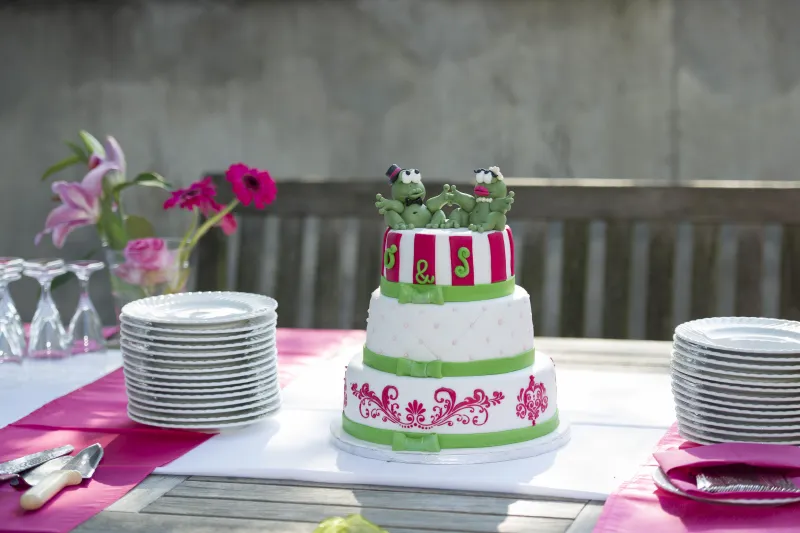
It's hard to believe, but this cake was made by the groom himself! He is a pastry chef!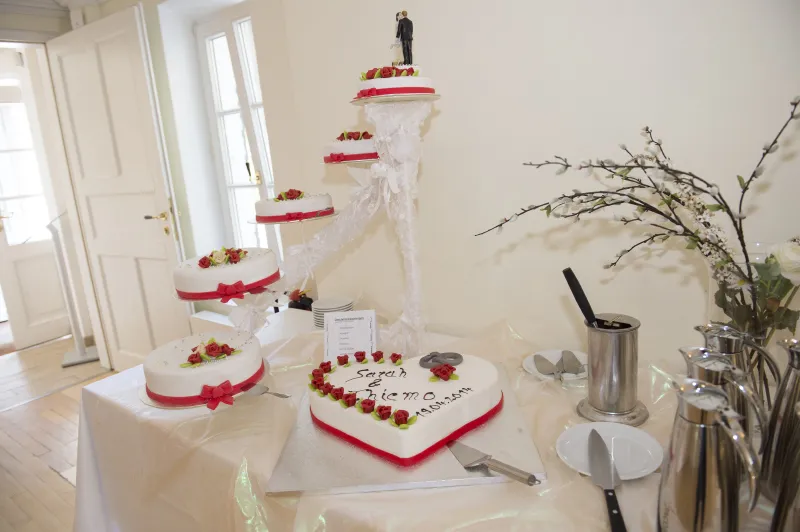
When cutting the cake, you should try to find the best perspective in good time. It's best if you have a front row seat and the opportunity to capture the whole scene, but you can also take a close-up of the couple's hands. If the cake is close to the wall, you can ask the bride and groom to position themselves a little to the side so that you don't just have to photograph the scene "from behind". Fortunately, the cake is usually cut in such a way that all guests have a good view of it.
You may have to ask a few guests to move aside so that they don't stand in front of you at the most important moment.
It only happened to me once at a garden party (it was very, very cramped around the garden buffet) that I had such curious guests standing right next to the couple that I had no chance of keeping the best spot. They just pushed themselves in front of me, held up their cell phones and cameras and I had to push and shove really hard to get a good picture. There was also no chair or anything like that nearby. Normally the guests keep their distance, so you shouldn't have any problems.
Of course, the bride and groom will taste the first piece themselves. It is quite common for them to take turns "passing" the first morsels to each other.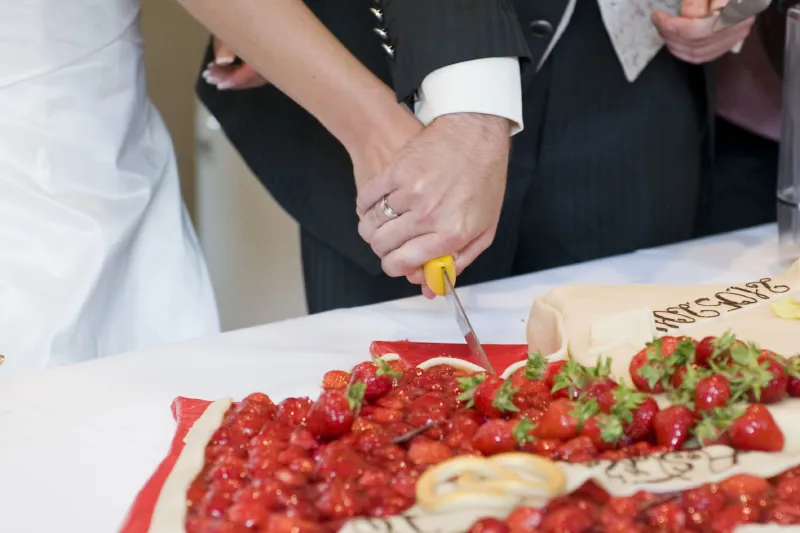
There is often a lot of laughter here and of course your camera must not miss this. Then the bride and groom will provide the waiting guests with a piece of cake. At some point, this will be taken over by the family or the hard-working staff at the venue.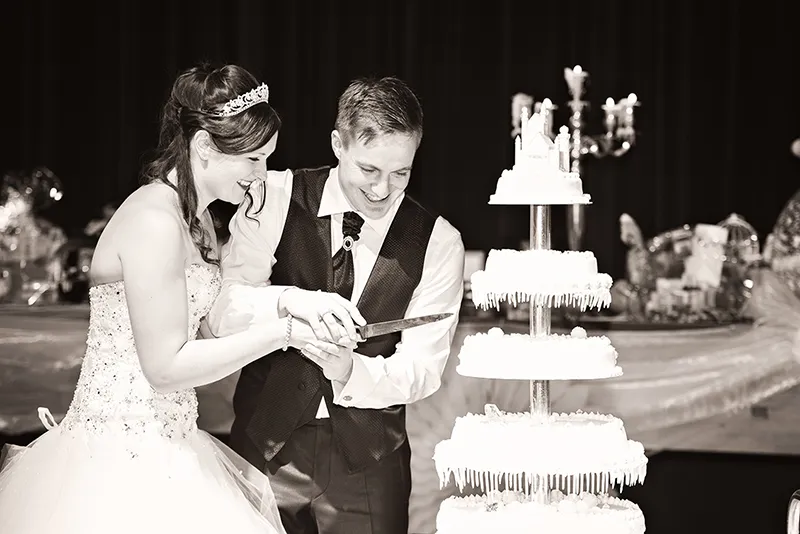
4. speeches
Speeches are almost always given. Whether it's the bride and groom welcoming the guests and thanking them or perhaps the parents of the bride and groom giving a short speech later on. Of course you are there with your camera! I like to position myself so that I have a good view of the speaker and the bride and groom to capture all the emotions.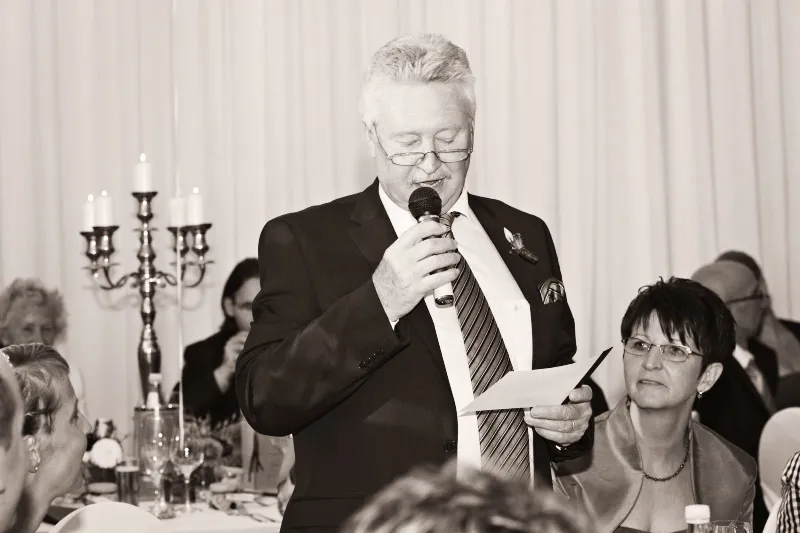
I like to use a lens with a long focal length so that I can take photos slightly away from the action. I have brought you one or two photos to illustrate this. Of course you can also capture the whole scene.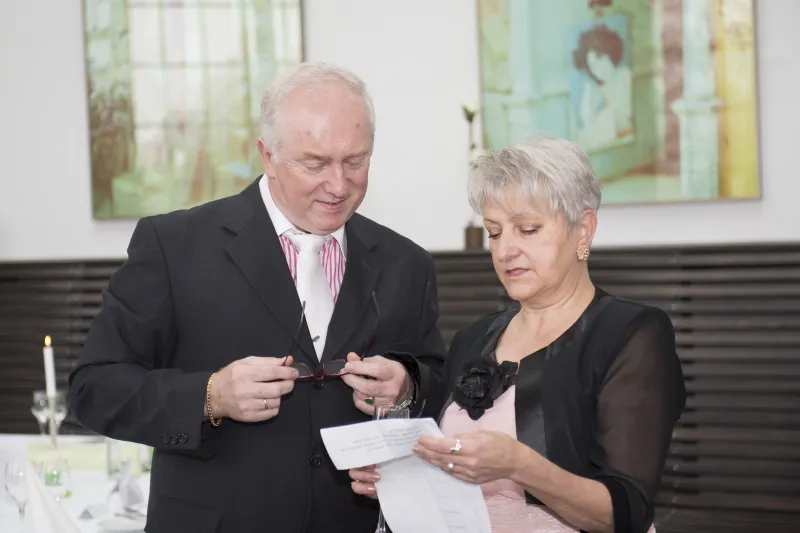
Pay attention to the emotions around you, perhaps one or two of the guests are also very excited or feeling the same way. You can make great use of this for one or two perfect pictures.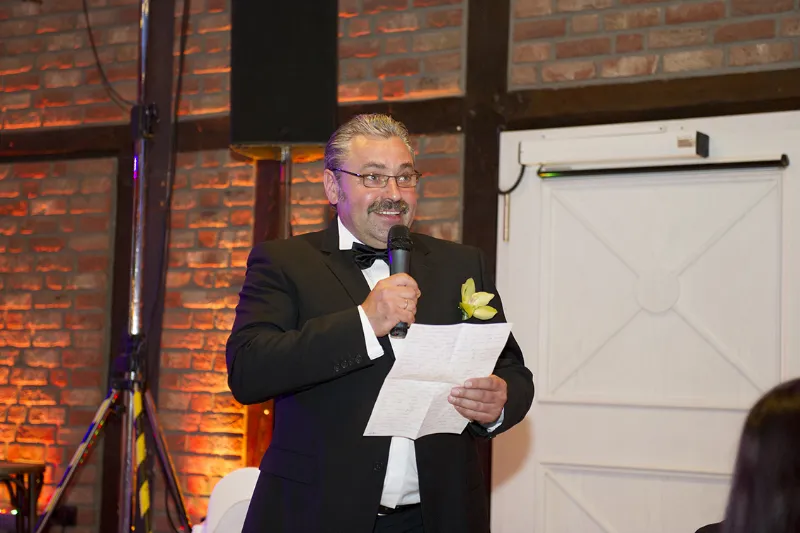
5. dinner
When I have longer reportages, dinner is usually part of my photos. However - as already mentioned - I usually recommend ending the reportage at dinner or - if a party accompaniment is desired - taking a short break here anyway. As I have already described in a previous tutorial, you can also ask during the consultation if you can join the dinner. In most cases, no bridal couple will say "no", especially because there is plenty of food planned for one or two more guests at the buffet anyway and if you are booked for a long time at the wedding, it is only natural that you will have to eat something from time to time. After all, you have a long job. The philosophy of my colleagues is very different here. Some don't attend dinner at all and eat the odd muesli bar in between, while others do this as a matter of course at every wedding and go to the cake and evening buffet.
Perhaps it's also a matter of attitude. I'm a bit more discreet here, and if I have permission to eat, I only go when all the guests have already helped themselves, take a small portion and then enjoy it outside of the action. It's a bit more discreet that way. But you can do it however you like. Ask the couple in advance, then you're already covered here. As I said, most people take it for granted and you're often even booked at a table for dinner.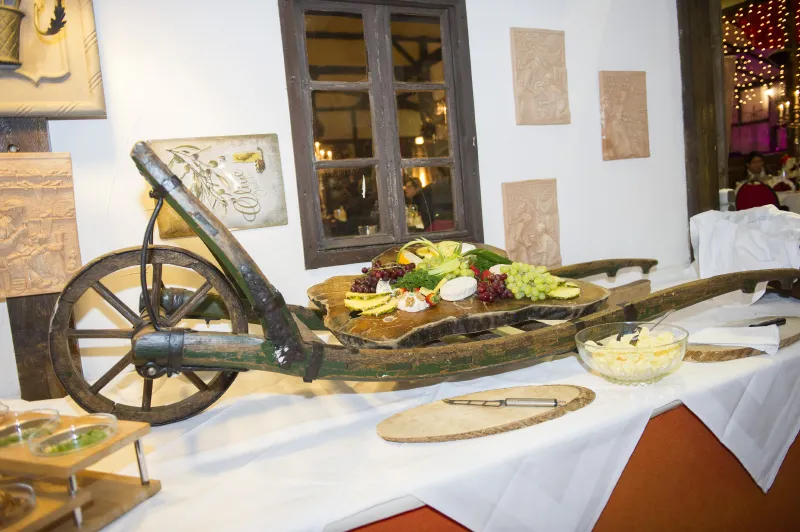
Otherwise, I go to the buffet in good time and take photos right after the food is laid out, just before the opening. So you have some nice photos of the dinner! Here I photograph individual dishes and also the buffet as a whole. If there is no buffet, you can also simply take photos over the shoulders of one or two guests while they are being served. I completely avoid taking photos of the guests eating. You'll see for yourself that this doesn't make you popular. All impressions before the meal, queuing at the buffet etc. are welcome to be captured.
6. games and surprises for the bride and groom
Whether a heart is cut out directly after the wedding ceremony, balloons are released or the evening party program with games and surprises: It is advisable to briefly ask the groomsmen after you arrive what is planned and when exactly it will happen. There will always be last-minute things that the groomsmen may not know about, but in many cases they will be happy to tell you everything and you can then prepare accordingly.
I have brought you some sample pictures. They include classics such as the heart, sawing logs, bubbles, balloons and evening games. If you're lucky, something special is also planned. I'm always thrilled when, for example, a whole carnival group stands in the trellis as a surprise or a fire department team comes out with a great program. This is always a highlight for your photos. Always be well prepared and get to the best position for your photos in good time, preferably with the perfect lens for this purpose, of course. Especially when there is a lot going on around the bride and groom, I like to choose something with a shorter focal length and prefer to get closer to the action if I only want details. This allows me to capture the whole scene from a short distance, for example, which is often much more interesting than just a small section.
Sawing a log! Also a classic:
Bread and salt for the bride and groom!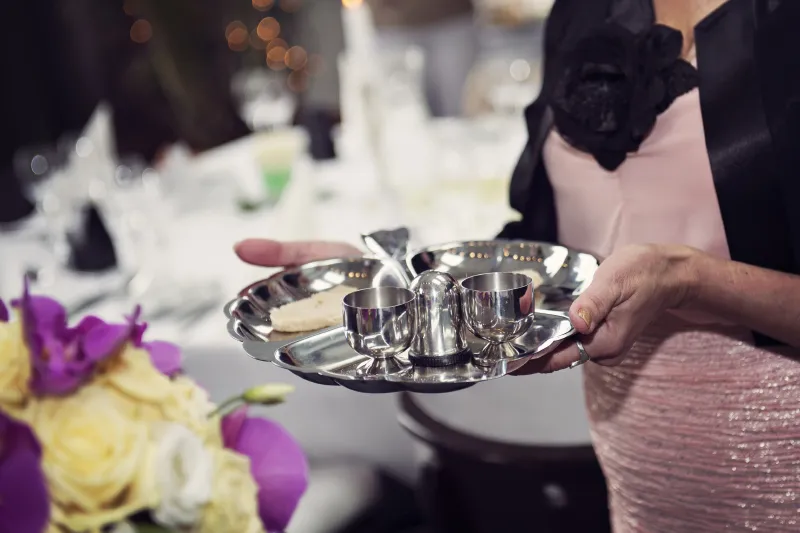
The classic: cutting out the heart and of course carrying it through afterwards!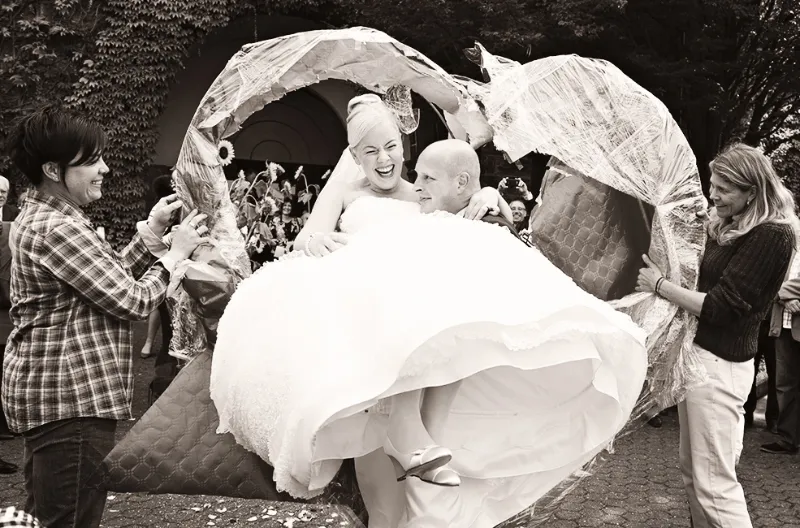
Sometimes the couple's friends have thought of nice things. You should also be there with your camera!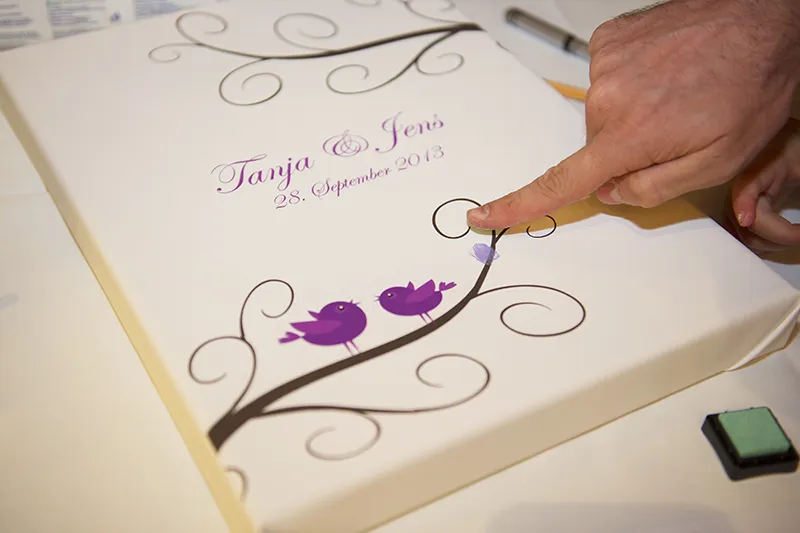
7. bridal couple dance and party
There are no specific rules for the bridal dance, except for choosing a shorter focal length. As just mentioned, I also like to capture the scenery here. The surrounding guests, the evening light, the swinging wedding dress! Of course, it's ideal if you have two cameras and can get closer with a telephoto lens. That way you can take portraits of the couple and capture their emotions better. Because you can't necessarily get that close now. Be creative and find a chair that you can climb on to make the picture a little more dynamic, or crouch down for a different perspective. The bridal dance will last a few minutes, perhaps until the guests join in, and during this time you can play around a bit with your focal length and shooting angle.
By the way: For important highlights such as the bridal couple's dance, you should check the lighting at the location beforehand. If there is a DJ on site who is in charge of the lighting management and likes to shine colorful spotlights on the dance floor, perhaps ask them not to get too creative during the bridal dance. Sometimes they like to work with red or green spotlights, which are very bright and may be on the couple's faces for the whole dance. Perhaps he will choose more neutral colors at your request and maybe light them a little more evenly. This will make your work easier and enhance the overall mood of the picture. Here are some examples for the bridal couple's dance.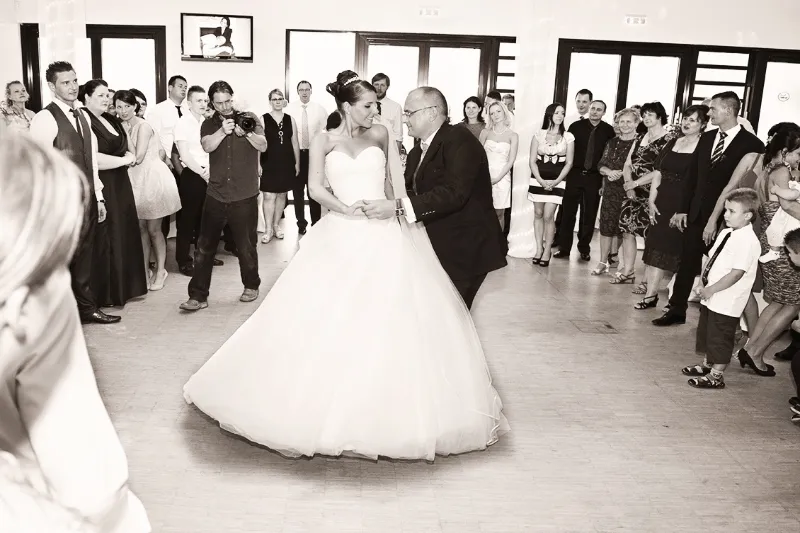
For dance pictures of the guests and the general mood, I also like to change the perspectives as the location allows. Sometimes I climb onto a chair and capture the scenery or there is a stage/gallery etc. to photograph the whole thing from above. Then again, I like to go into the middle of the action and photograph the guests up close. Please watch your feet and protect your equipment from flying elbows. I've seen it all before. The guests don't pay attention and if there is momentum, something can quickly happen to you and your camera. So: put a strap around your neck if you sometimes forget to do this, and hold everything tightly, always keeping an eye on everything that's going on around you. No problem with a little practice!
You will soon realize that the lighting mood at the location is of course decisive for the quality of the photos. If you have a room that is also well-lit at the sides, you will have a much nicer atmosphere than in very dark rooms that have no light at the back and only the dance floor is "high live" in terms of lighting. It won't always be possible to prevent the lighting mood from being lost towards the back. Unfortunately, this cannot be changed. A candlelit atmosphere in dark halls is cozy, but not always ideal for your photos. Therefore, look for a little excitement and light in the background of your photos, even if you then take most of the photos towards the stage, for example, before you are threatened by too much black at the back of the picture. This makes the pictures unnecessarily hard and the flash, which you will certainly use because there is movement in the picture, will appear much stronger and flatten the picture.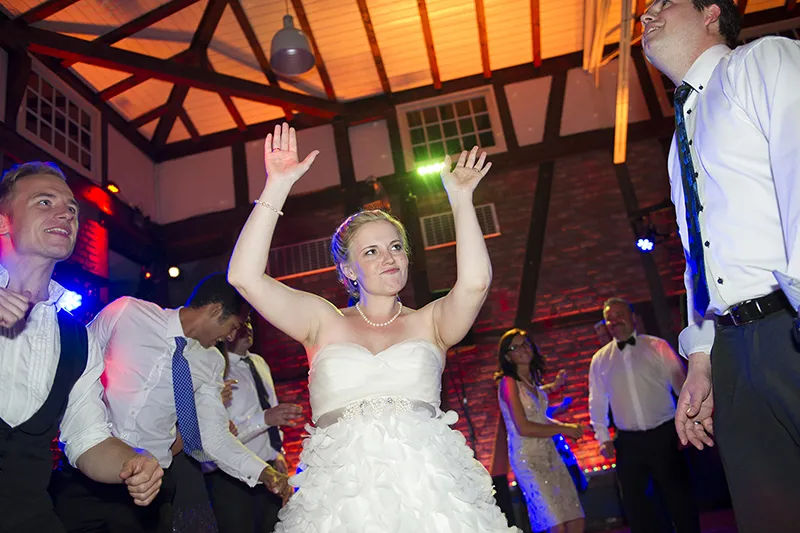
Caught! Anna's dad dancing with the bride. A funny snapshot.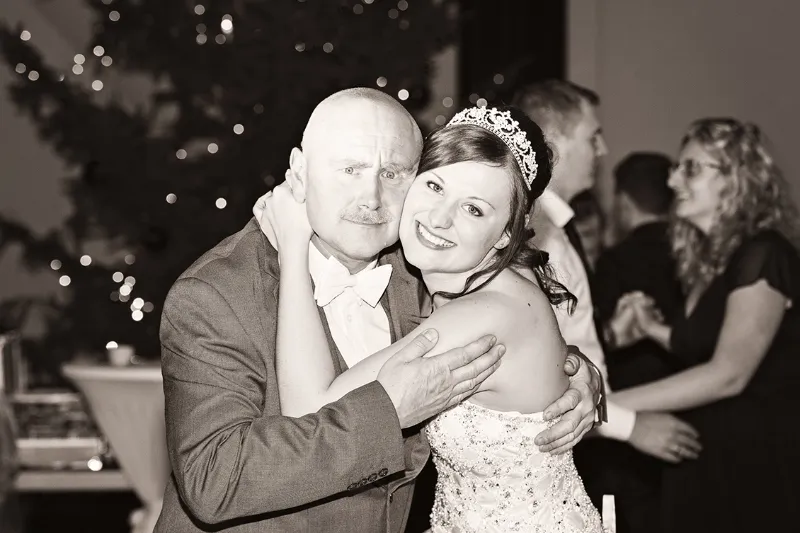
8th bouquet toss
There are no clear times for this either. There is often a bouquet toss after the ceremony or after the coffee/cake. Then, of course, you have a lot of light available and can choose better exposure times than with subtle evening lighting in dark rooms. A little practice is also required here and all the circumstances that present themselves to you. Again, choose a shorter focal length for all the action and a good position to keep both the bride and the waiting crowd of women in view as they pounce on the approaching bouquet. You can time this perfectly and tell the bride exactly where she can stand, how best to throw and maybe even give her a quick "go". That's how I always do it.
It won't spoil the mood in any way. I like to take a photo "before", when the bride is positioning herself, looking behind if necessary, and you can also position yourselves in front of the bride, with the ladies in focus or vice versa. That's always a nice picture. Then, as I said, I position myself to the side. It's important to get a picture of the bride throwing and then I go straight to the ladies. Here I zoom in quickly so that I can capture the ladies perfectly as I catch them. It's too funny what looks you'll see in the photos later! This is where you have to keep your eyes peeled!!! Always stay on the lucky lady who has caught the ostrich and take pictures of all the reactions afterwards. She will probably be cheered and congratulated and may have to do a little dance with her partner straight afterwards.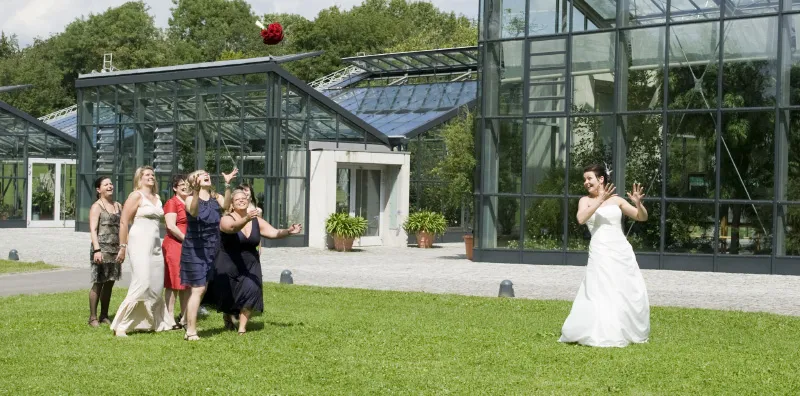
9. miscellaneous
Of course, there are many highlights at a wedding that I have not listed in detail here. Perhaps a late firework display is planned or a special ceremony. A few days ago I had a pagan wedding ceremony for the first time, which was held late in the evening in complete darkness in the garden. This was really a huge challenge as I was not allowed to use flash and was only allowed to photograph from a fixed, very unfavorable angle.
This surprise firework display was a great idea for our bride and groom.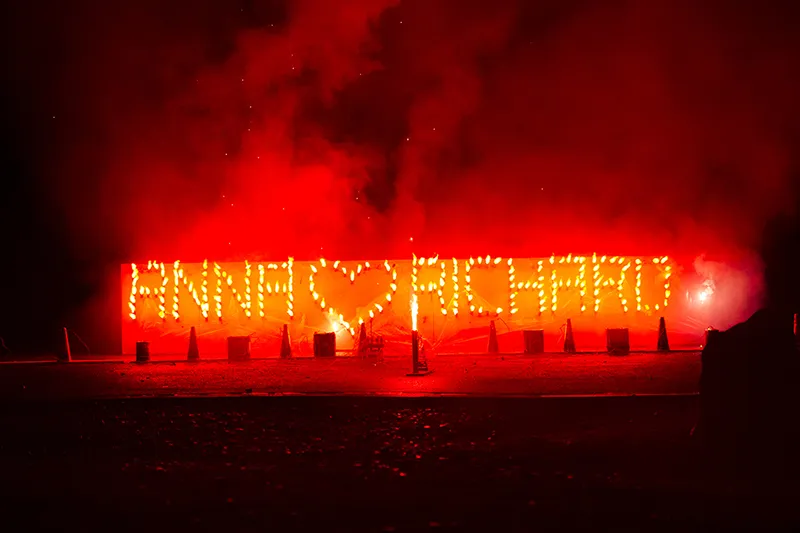
No matter how well prepared you are in terms of equipment and experience, there will always be things that you can't predict or that simply can't be changed. Then you have to make the best of what you have at the moment. You have to be spontaneous and get the best out of yourself and your technique that you can! To do this, you need to be familiar with all the settings and possibilities of your equipment. Because that prevents you from having to draw a sad conclusion afterwards, namely that you could have done better. But if you know what is possible and where the limits of your equipment lie, and always do the best you can in the respective situation, then you have done everything right. It will be a long journey before you get to that point and no one will expect you to get it right straight away.
All you can do is prepare well and be ready for anything. Always be one step ahead, keep your ears and eyes open, try to anticipate what your bridal couple will do next. Always be there, always present, always ready for action. Always change lenses and batteries at the right moment. Never get too far away and always be on your guard. This is a lot of fun because you are always challenged and will hopefully feel the same challenge at every wedding as I do: always strive to get the best out of yourself and your photos. Never be lazy in your work! I mean that in terms of changing lenses (oh well, it'll work out ...) or being inventive (oh well, I'll just do like I did with Simon and Klaus last time ...) - be inspired and motivated to always do a little better.
Break new ground, even if it means taking a risk. You have to assess whether the situation allows it or not. With a couple's reportage, you can always be daring with 1-2 series of shots. Always play it safe with a wedding ceremony! If necessary, always choose safety over "experimentation" in the beginning. But in other areas: Unfold yourselves, dare to tread new paths. If you make mistakes, learn from them and do it differently/better next time! Weigh up whether you can still change something about the situation or whether you have to make the best of the situation because you can no longer do so.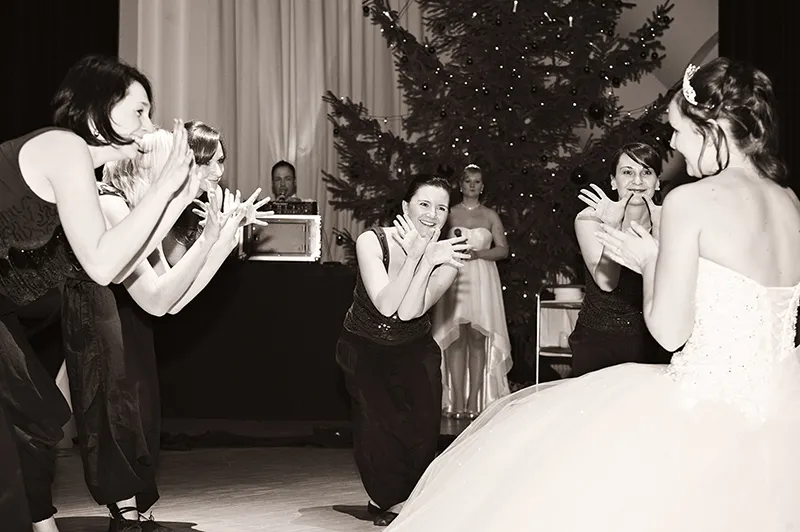
It's always a lot of fun to simply practise such things. The experience will give you confidence and at some point you can just throw yourself into your ideas and creativity and develop much more freely than is perhaps possible at the beginning. Of course, wedding photography is a completely different matter, as you can't repeat anything. It has to work the first time. Every other shoot can be repeated in an emergency. Not this day. Even if you have to keep that in mind, it shouldn't put you under so much pressure that mistakes happen. The experience will take away any fear and then wedding photography will be a lot of fun. I promise you that.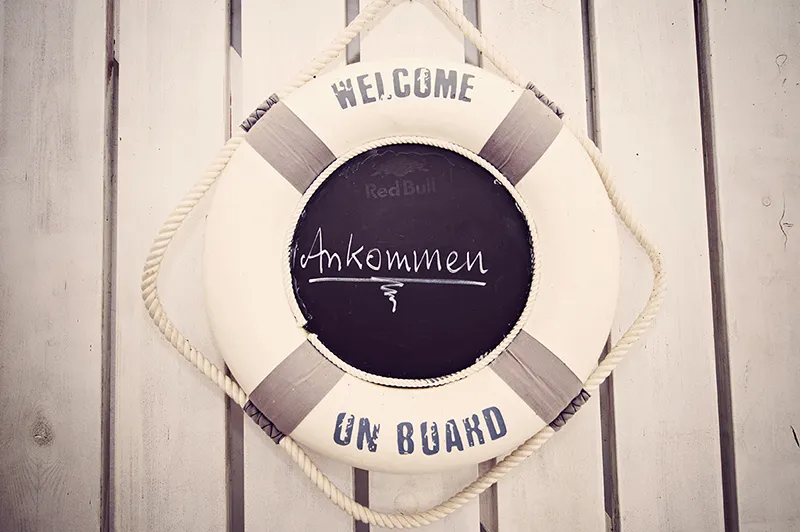
At this point, I wish you many exciting surprises at your weddings, which will offer you many great motifs from a photographer's point of view, and thank you for reading this tutorial. See you in the next part! My very special favorite part of wedding photography!
Yours, Nicole Schick
www.fotostudio-mit-herz.de
